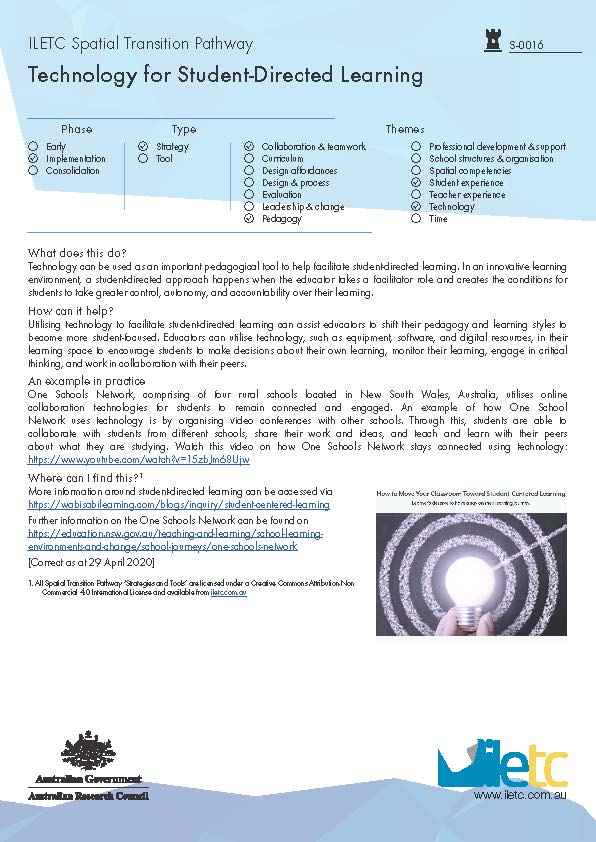| Introduction | Wayfinding activity | Spatial typologies | Spatial transition case studies | Spatial transition resources |
Spatial Transition Pathway
The Spatial Transition Pathway provides a framework for the strategies and tools which support teachers to make the journey of change into innovative learning environments. Strategy is defined as an explicit concept, theory or practice that enhances teachers’ use of innovative learning environments. A tool is an identifiable activity or protocol, that implements a strategy. You can use the database to search for strategies and tools by temporal phase or transition theme(s). If you would like to contribute a strategy or tool, please contact the ILETC team.
Technology for Student-Directed Learning
Technology can be used as an important pedagogical tool to help facilitate student-directed learning. In an innovative learning environment, a student-directed approach happens when the educator takes a facilitator role and creates the conditions for students to take greater control, autonomy, and accountability over their learning.

